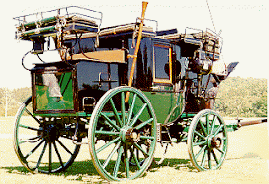Yesterday during looking to the Tour de France in Yorkshire, I saw all those beautiful pictures from the modern London.
It brought me to the question:
What did Charlotte Bronte see of London?
Which buildings and streets (and so on) did exists in the time of Charlotte Bronte?
The Victorian city of London was a city of startling contrasts. New building and affluent development went hand in hand with horribly overcrowded slums where people lived in the worst conditions imaginable.
The population surged during the 19th century, from about 1 million in 1800 to over 6 million a century later. A combination of coal-fired stoves and poor sanitation made the air heavy and foul-smelling. Immense amounts of raw sewage was dumped straight into the Thames River.
Just behind Buckingham Palace the Grosvenor family developed the aristocratic Belgrave Square. In 1830 land just east of the palace was cleared of the royal stables to create Trafalgar Square, and the new National Gallery sprang up there just two years later.
When was the Square built?
Between 1825 and 1847. It was transformed from a large undeveloped area sometimes described as a swamp, a waste or a cess pit into one of the most fashionable districts of London. The marshy ground was partly filled with rubble from excavations in Dockland but the whole area is still not far above the level of the Thames.
What was here before it was built?
It was part of an uncultivated and marshy area between London and Knightsbridge, called the Five Fields which was thought to be very dangerous because of highwaymen.
The early part of the 19th century was the golden age of steam. The first railway in London was built from London Bridge to Greenwich in 1836, and a great railway boom followed. Major stations were built at Euston (1837), Paddington (1838), Fenchurch Street (1841), Waterloo (1848), and King's Cross (1850).
In 1834 the Houses of Parliament at Westminster Palace burned down. They were gradually replaced by the triumphant mock-Gothic Houses of Parliament designed by Charles Barry and A.W. Pugin.
For all the economic expansion of the Industrial Revolution, living conditions among London's poor were appalling. Children as young as 5 were often set to work begging or sweeping chimneys. Campaigners like Charles Dickens did much to make the plight of the poor in London known to the literate classes with his novels, notably Oliver Twist.
Upon this scene entered an unlikely hero, an engineer named Joseph Bazalgette. Bazalgette was responsible for the building of over 2100 km of tunnels and pipes to divert sewage outside the city. This made a drastic impact on the death rate, and outbreaks of cholera dropped dramatically after Bazlgette's work was finished. For an encore, Bazalgette also was responsible for the design of the Embankment, and the Battersea, Hammersmith, and Albert Bridges.
Regent Street rond 1850
Before the engineering triumphs of Bazalgette came the architectural triumphs of George IV's
favorite designer, John Nash. Nash designed the broad avenues of Regent Street<, Piccadilly Circus, Carlton House Terrace, and Oxford Circus, as well as the ongoing creation of Buckingham transformation of Buckingham House into a palace worthy of a monarch.
victorian-london
 'It was a little budding rose,
'It was a little budding rose,





















